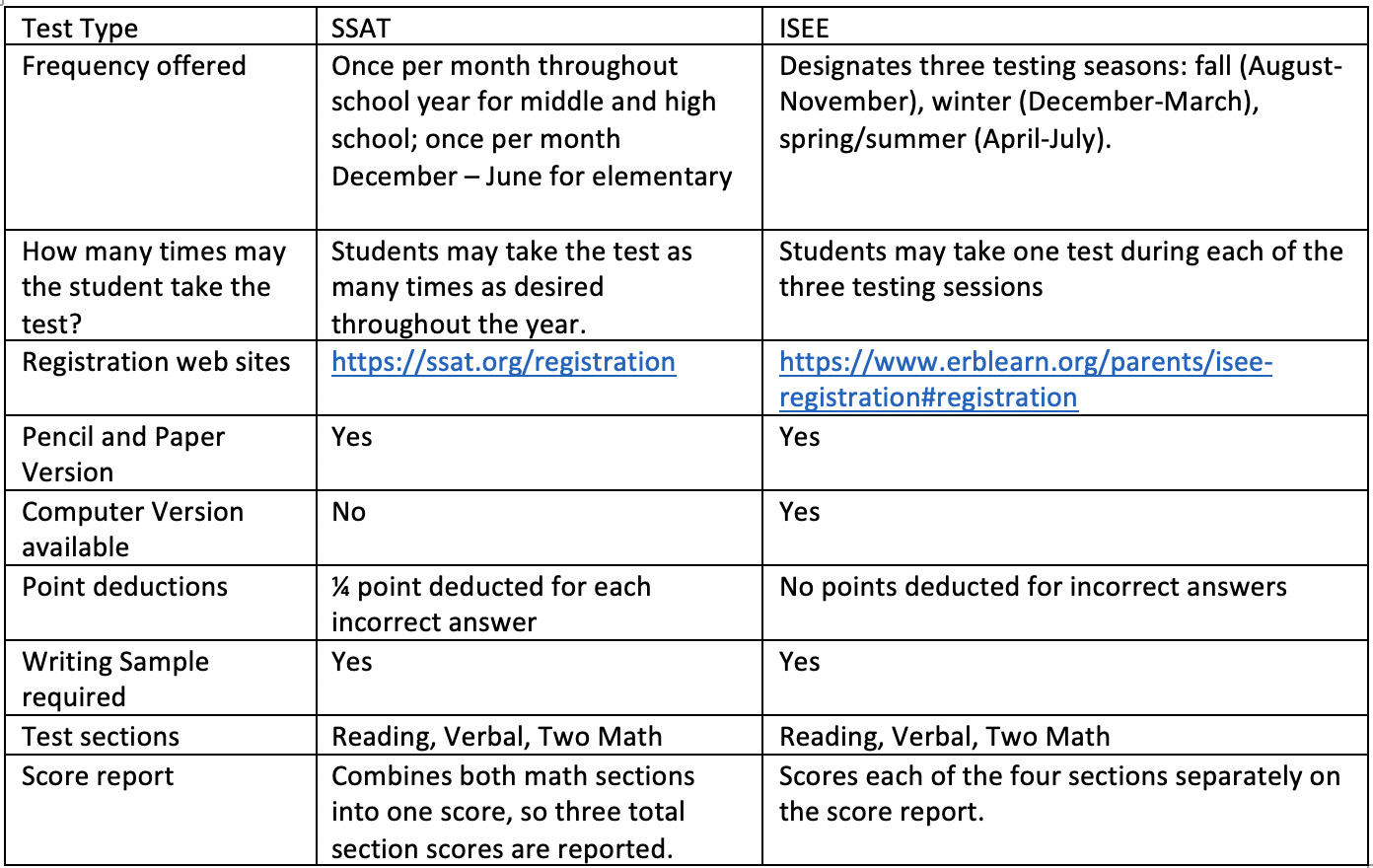ISEE and SSAT: What's the difference?
Students applying to a private elementary, middle, or high school typically need to take either the ISEE (Independent School Entrance Exam) or the SSAT (Secondary School Admissions Exam) as part of the application process. These tests are not simply mini SATs or ACTs: they are unique tests with some question formats that are not featured on college admission tests. Students benefit greatly both from choosing the best-fit test (if they are allowed a choice) and from thoughtful test prep.
Test Levels
SSAT Elementary Level: for application to grades 4-5
SSAT Middle Level: for application to grades 6-8
SSAT Upper Level: for application to grades 9-12
ISEE Primary Level: for application to grades 3-4
ISEE Lower Level: for application to grades 5-6
ISEE Middle Level: for application to grades 7-8
ISEE Upper Level: for application to grades 9-12
Test formats and frequencies
Within each test are various levels of material geared toward the entire block of test takers. Depending on his or her age, a student may see content that is two to four grade levels above what s/he currently studies. The scoring of each test compares the tester only to other testers in the same grade. For example, a student entering fourth grade will take the SSAT for 4-6 graders. Because the material on this test is geared toward a range of grade levels, the rising 4thgrader will see material that is two or more grade levels above his/hers. However, the student will be scored only in comparison to other rising 4th graders, not to rising 5th or 6th graders taking the same test.
Which one should you take?
If your student is applying to a school that accepts either test, it’s worth taking a practice test of each to see which might be a better fit. In addition to the differences noted above, each of these tests also have various characteristics that may be better suited to your student’s strengths. For example, the SSAT verbal section consists of only synonyms and analogies while the ISEE verbal section contains synonyms and sentence completions. While all of these question types test vocabulary, only sentence completions test vocabulary in context. The ability to use context clues in sentence completion questions can help a student who may struggle a bit more with vocabulary, which makes the ISEE verbal slightly more forgiving. In contrast, the math on the ISEE tends to be slightly harder than the math on the SSAT. Not only does the upper level ISEE test a few more advanced topics than does the SSAT, but the ISEE also provides less time per question which raises the test’s difficulty level.
Test frequency can also play a role in test choice. A student can take the SSAT more frequently than the ISEE, which can help families who are working with a compressed testing timeline. The ability to test more frequently can also help students who may have increased test anxiety and will benefit from taking multiple tests.
These tests can seem quite confusing due to the multiple test versions, timelines, question types, et cetera, but it’s worth doing some research into which tests your schools will accept and creating a testing timeline to set your child up for success.

